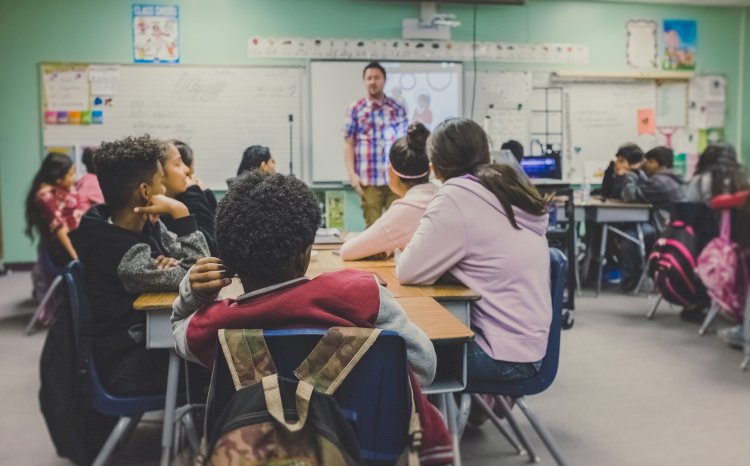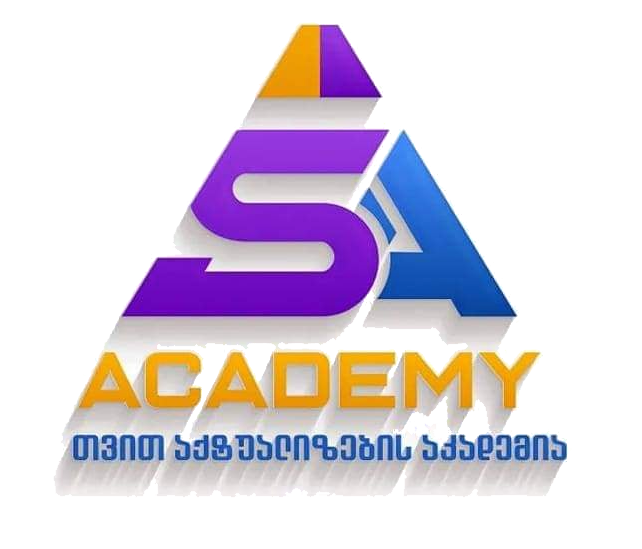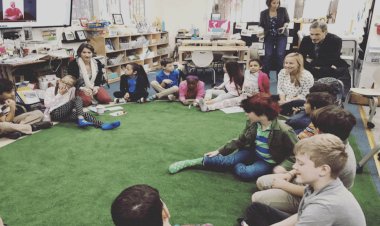Exploring the Student-Centered Classroom Management and Self-Actualization Tendencies in Georgian Classrooms

Exploring the Student-Centered Classroom Management and Self-Actualization
Tendencies in Georgian Classrooms
Source: Journal of Education in Black Sea Region Vol. 4, Issue 2, 2019 pp. 161-171
https://jebs.ibsu.edu.ge/jms/index.php/jebs/article/view/176
Authors:
Nino Tvaltchrelidze ; Nana Aleksidze
Abstract
The demands of the 21st century world have changed, these changes require the modernization of the tendencies almost in every field, including education. The demand of the globalized world caused the shifting of educational approaches from the conventional and traditional methods to more contemporary, person–oriented and challenging ones. Georgia is a developing country. The multi-ethnicity of the population makes its educational system to be more sophisticated and tailored to the population needs and contemporary challenges. Self-actualization is one of the best ways of students’ engagement and encouragement in the educational process and for their preparation as life-long self-directed learners. Adopting the student-centered approach in teaching enhances the process of students’ engagement in the classroom activities and their self-actualization.
In order to find out the state of the student-centeredness and self-actualization in Georgian high schools the quantitative approach (4-point Likert scale questionnaire) was applied. Eight schools from different regions of Georgia were involved in the research. The results from the research are positive enough: more than the half of the high school students in
Georgian schools both in public and in private ones consider their classroom and the whole educational management more student-centered than teacher-centered. However, there is still much to be done for fostering and enhancing theses tendencies for making students learn in a really student-centered classroom environment and to make them more self-actualized.
Keywords: self-actualization; student-centered classroom management;
Introduction
The pace of the contemporary world is more accelerated than ever. The world society is developing as the technologies are developing. The demands of the modern world towards the society are changing. This development caused the necessity of new and effective approaches in every field including education. The contemporary demands of the globalized world caused the shifting of educational approaches from the traditional to more contemporary and challenging ones. During many years people’s and educators’ perception about teaching methods, approaches and classroom management has been in the process of constant change. Over the last decade the perception, understanding and attitude towards education and its role has changed. Moreover, the contemporary educators’ views on good educational methods also have shifted; they became more encouraging to implement an instructional approach which will be based on constructivist principles of learning (Brophy, 1999 as cited in Garret, 2008). A shift from teacher-centered approach to the student-centered one was considered to be one of the effective steps for making students be more actualized and classrooms - more student-oriented. The contemporary image of an average human is not the one who lives with an ordinary life (Maslow, 1970), but who faces the challenges of the highly developed world. These challenges require from student to have concrete skills for gaining success and overcoming all the current or forthcoming problems and demands. In order for students to be actualized and develop their potential in the competitive world, school needs to make concrete and effective steps. One of them is shifting to the student-centered approach, which can serve the basis for students’ future self-realization. The learners through the student-centered approach will effectively develop the following characteristics, typical for self-actualized people (Weimer, 2002, Doyle, 2012, Rogers, 1969, Maslow, 1970):
- Ability of critical and holistic thinking;
- Motivational life with quantitative and qualitative values;
- Ability to be identical and develop their own personal style;
- Ability to be independent but sociable;
- Ability of having healthy and sound perception of real life;
- Ability to develop one’s own personality;
- Value creation ability;
- Meaningful and profound sense of the culture in which they are immersed;
- Acceptance of human nature and social life;
- Acceptance the philosophy of life and physical reality;
- Ability to perceive truth and reality more efficiently than average people, whether it is structured or unstructured, personal or non-personal.
Classroom management is not only managing the core disciplines or students’ everyday behavior. Effective teachers should consider the crucial and critical ingredients of maintaining effective student-centered teaching, creating strategies, including the meaningful content of the learnt material and providing productive educational process (Allen, 2010). Student-centered classroom management is oriented to maintain meaningful learning, quality-oriented teaching, comprising the innovative activities, new ideas, and motivational approaches, applying techniques and educational strategies in order to gain successful and fruitful outcomes (Sofanudin, Rohkman, & Rusdarti, 2016).
Georgia is a country of multi-national and multi-ethnical population. The country gained its independence and started building democracy about 25 years ago and is still being in the process of development. Multi-ethnicity of the population of the country makes its educational system more sophisticated and tailored to the population needs and contemporary challenges. Students need to get new and needed skills to live and develop as individuals within the process of the country’s development. According to the Georgian articles in this filed, there are some tendencies to make schools student-centered, but it is not widely spread and does not comprise all Georgian schools. Some trainings are being held by the National Center for Teacher Professional Development to enable teachers apply a more student-centered approach (Etaloni.Ge, 2018), but their number is still not sufficient. One of the reasons of the contemporary state of the matter, as Datukishvili (2018) states, is the scarcity and lack of sources for teachers to make their classes more student-centered. Virsaladze (2019) investigated the problem of student-centeredness in Georgia. She mentions that the Ministry of Education, Science, Culture and Sports is testing a new model of teaching in primary school. It was piloted for one month (the short period causes journalist’s criticism) in one Tbilisi public school, and from spring semester will be tested in 50 schools, while from autumn the number of schools will reach 150. The project deals with the development of students’ critical thinking skills; the model emphasizes students’ active involvement in the class.
Self-actualization is one of the best ways of students’ engagement and encouragement in the educational process and for their preparation as life-long, self-directed learners. Adopting the student-centered approach in teaching enhances the process of students’ engagement in the classroom activities and their self-actualization.
Literature review
The goal of the student-centered education is to be learner-oriented, maintain knowledge-based teaching, encourage meaningful learning and create a student-centered classroom environment. Brophy (1992, as cited in Garret, 2008, p. 34) explains that in today’s classrooms students are expected to “strive to make sense of what they are learning by relating it to prior knowledge and by discussing it with others.” The class acts as “a learning community that constructs shared understanding” (ibid, p. 34). The objective of the following study is to study the situation in Georgia in terms of student-centered classroom management and to see how students are prepared for adopting this approach and how they feel and reflect themselves in the existing atmosphere in their classrooms. Student-centered education also known as a person-centered (The Glossary of Educational Reform) or learner-centered education (Weimer, 2002), broadly comprises those methods of teaching that shift the focus of instruction from the teacher to the learner. Student-centered education is considered to be one of the most effective ways of getting students to be active in the classroom, maintaining the fully student-oriented management in the class and letting students to be free and encouraged during the learning process. Student-centered education makes students more responsible for their learning and more aware of their role in their educational life. This process assists to the effective process of students’ self-actualization.
Student-centered approach is considered to bear the conception of humanistic educational theories oriented on the people and the learners, on humans’ development (Garret, 2008). Effective student-centered teaching ensures creating effective student-centered classroom management. According to Garret (2008), classroom management can be seen as a complex concept comprising all the core aspects of the educational process, that are organizational aspects, environment, and establishment of certain rules and communication, relationship and the preventive responses to different kinds of misbehavior.
The role of education became not only to educate or teach, but also to prepare students for the new world demands and to equip them with all the needed skills to succeed and to satisfy the future challenges. One of the big roles of education is to get students understand the real world in which they live, to seek the answers of the challenging questions, to be ready and organized towards the problems and opportunities that confront us. We really need to know the world around us, the dynamics of that world. Another role of learning is also to get the students be involved in deep reflection on perennial questions and to engage their mind in critical awareness. This kind of approach to educating students will lead to their self-actualization. According to Maslow (1970), self-actualization is maximizing the human’s inner potential, the use of abilities and talent for gratification the person’s core or basic needs to become fully human. This is the process of self-growth, self-fulfillment and motivation. The student-centered approach broadly comprises cooperative and collaborative working principles. According to Albert’s cooperative discipline program (VanHousen, 2013), teachers’ main responsibility in maintaining effective classroom management is to focus on their students’ learning and meeting their needs, fostering their collaborative skills, creating cooperative relationship between teacher and students, enabling students to be aware of their abilities, learning goals and responsibilities.
Humanistic Conception in Education
Humanistic approach, according to Maslow (1970), seems to be the new and far more hopeful and encouraging way of comprising any and every area of human knowledge, e.g. economics, sociology, biology, and every profession e.g. law, politics, medicine, and all social institutions, e.g. family, education, religion, etc. Being self-actualized means combining all the characteristics the process of self-actualization develops. When a person is self-actualized, his/her whole organism becomes more trustworthy, more self-protecting, self-directing, self-governing, and, eventually, more keen to have the aspiration towards the growth of being self-actualized (Maslow, 1970, p. 97). While creating student-centered environment, teachers should appreciate the fact that lots of inexperienced learners are keen on choosing easy but creative ways rather than challenging ones. Teachers would never forget that the process of growth is not an easy one, it is a difficult and painful process and for that reason may also be shunned, that learners are afraid of their possibilities and responsibilities towards their roles as learners and as individuals. Student-centered teaching is oriented on learners and learning. To reach the ultimate purpose of the approach means to empower students to become the well-equipped and developed life-long self-actualized learners, getting positive and effective learning outcomes and to prepare learners to be realized and fully functioning humans. Helping students reach this goal involves adopting the student-centered teaching as a most effective and productive approach in education. Teachers should provide students with delivering meaningful, conscious learning. They have to enable students to aspire and to be ready to live meaningful lives.
Self-actualizers are well aware of their strengths and weaknesses and are grateful for their talents, capacities, abilities and inborn human potential. According to Maslow (1970, p vxii), teachers by giving the real possibility to students to be well aware of their abilities, motivate and empower them to be self-actualized. When learners are fully aware of their human traits, accept them as fact and are happy and grateful towards their blessings to reach that condition of personal satisfaction, this leads them to their individual development and fulfillment. Human nature of learners always experiences a “quest for identity” (Maslow, 1970, p. xviii). They have their biological essence, though very weakly and subtly determined, but still very demanding to get their identity, discover their individual self and be fully confident members of society, of their classroom.
According to the above-mentioned concepts of the Maslow’s self-actualization and the self-actualizing humans, we may briefly sum up the concept and list that self-actualized people have:
- The ability of critical and holistic thinking;
- Motivational life with quantitative and qualitative values;
- The ability to be identical and develop their own personal styles;
- The ability to be independent but sociable;
- The ability to have a healthy and sound perception of real life;
- The ability to maintain and employ their ego;
- The ability to develop their own personality;
- The ability to create values;
- A meaningful and profound sense of the culture in which they are immersed;
- The acceptance of human nature and social life;
- The acceptance of the philosophy of life and physical reality;
- The ability to perceive the truth and reality more efficiently than an average human.
According to Johnson (2017), there are four tasks specifically related to the self-actualization process:
- Discover and understand oneself. This occurs while understanding and accepting oneself and applying the qualities of one’s own personality, involving the integration of one’s conscious and unconscious parts of personality, feeling free to act upon one’s wishes, needs and feelings.
- Express one’s inner core. This allows humans to create more dynamic and better defined interaction between the ego and self. This can be done through poetry, music, dance, visual arts, and drama and in small group discussions where students are engaged in sincere dialogues.
- Find one’s passion and act on it. This is what adult people do - the matter of discovering what the human is interested in and the matter of indulging in it. Teachers should respect children and afford them the same opportunity. If a student finds a passion in science, mathematics and religion, or marketing, writing and subjects like this, that student should then be allowed to pursue that passion. The teachers’ role in it is to expose students to a wide variety of topics and activities and create the structure and environment where the students can indulge their passions.
- Discover one’s strength or talents and learn how to use them in order to solve problems. This aspect exposes the notion of being successful on the basis of the being aware of one’s own potential and the skills of applying that potential in order to achieve the goals. In this aspect the task of the education is to teach children how to be problem solvers, how to find their ways of thinking, acting and communicating.
In order to work out the above-listed abilities students need to be active, motivated and encouraged through the process of self-actualization. Self-actualization bears all the needed features which are so necessary for the contemporary world to face the challenges and to succeed. Education is most effective when the core goal of it and prime directives are to help each student discover his/her talent, to release his/her inner potential for the future realization. Schools and educational institution should be the vehicles for self-actualization. Self-actualization is defined as the psychological condition of the person where he/she has the ability of self-acceptance and self-actualization of one’s own capacities and potentials (Johnson, n.d).
Self-actualized learners are never adjusted to their culture, are never conformists, but on the contrary, self-actualized people will live in any society and any time constructively in harmony with their culture. Without having a feeling of stress or fear, unhappiness or anxiety, self-actualized learners continue to be themselves and behave in such a way as to provide the maximum and possible satisfaction of their needs. People with the characteristics of a self-actualized, fully functioning learners are recognized to be the students of evolution who are adapted and get used to those challenges the world and reality places in front of them (Maslow, 1970, p. xx).
Research methodology
Research goals
The current research aimed at collecting and analyzing data concerning student-centered approach application in Georgian schools. Only on condition that schools apply the student-centered approach, the conditions for students’ self-actualization will be created. The study examines the rate of the chosen educational approaches - either teacher-centered or student-centered and mixed type, the atmosphere in the high school classrooms and students’ perception and attitudes towards their learning and classroom life.
The research will determine the further steps and recommendations in order to provide more student-oriented classroom management and enhance learner-oriented tendencies among students and their instructors.
Research Questions
The first needed step for exploring and increasing students’ awareness in the student-centered classroom management tendencies in Georgian classrooms is to equip students with the adaptation skills to be well adjusted to the changes. The following study will provide the answers to the following questions:
- Are classrooms in Georgia managed in a student-centered way?
- How do teachers organize classroom-life and manage students’ involvement in the process?
- What should be done to make the process more effective and classrooms more student-oriented?
- What predictions can be done on the bases of the conducted research for students’ self-actualization in Georgia’s high schools?
Methods
The current research involved quantitative methods (a questionnaire survey).
The research comprised the following steps:
Defining the population of the research
The research was conducted in eight schools of Georgia in order to get the relevant findings and results. The schools were from different regions of Georgia
The total amount of the participant students is one hundred and fifty-six.
The research population were students aged 16-18. Teen age, especially the period between 16 and18 is called transitional age and is a vulnerable period for teenagers, as they have to make decisions concerning their future profession, to plan the form and the style of realization of their school knowledge. This age was chosen, as this is the most important stage of self-identification and self-realization greatly depends on it.
The questionnaire items formulated according to Maslow’s (1970) conception of self-actualization were grouped according to Weimer’s (1988) approach named ‘Five Key Factors of the Learner-Centered Teaching’. The questionnaire contains 30 questions which are formulated according to Maslow’s (1970) conception of self-actualization grouped according to Weimer’s (1988, pp. 5- 85) approach named ‘Five Key Factors of the Learner-Centered Teaching’ .The thirty items of the questionnaire are divided into 6 parts, with 5 items each. Each item measures one of the below mentioned factors. For example, the first aspect Balance of Power is measured in five aspects, which identifies how the balance of power is controlled within the factor of the classroom environment, how it influences the course material review, what impact can make the instructors’ self-actualization rate on the balance of power, how can the balance of power impact the students’ self-reflection and what are those steps needing to be improved concerning the balance of power in the classroom.
The factors of student-centered teaching are:
- Classroom environment;
- Course material review;
- Instructor’s actualization rate;
- General motivation and self-reflection of the student;
- Specifically what needs improvement (p.85).
The above-mentioned factors are measured in six aspects:
- Balance of power
- Function of content
- Teacher’s role
- Responsibility of learning
- Purpose and processes of evaluation
- Self-actualization
In spite of the difference between the involved schools’ results, they tend to be more student-oriented than teacher-oriented, but still much has to be done to reach the desired level of student-centeredness.
Conclusions and recommendations
According to the research findings, the current situation in Georgian schools gives a basis to conclude that Georgian high schools bear certain student-centered tendencies, depending on the school and the region.
Based on the conducted literature review and research, the following recommendations can be given for improving and fostering the whole educational process in the classrooms in Georgia to make it more student-centered and to empower students to be more self-actualized. Teachers, parents and school administration or school principals should be collaboratively involved in the process of making students more engaged in the classroom activities, perceiving their active role in the learning, and being more self-actualized, more oriented to study and to realize their knowledge. This can be done through the following measures:
- Creating a collaborative action plan for teachers, parents and students;
- Motivating them (teachers, parents and especially students) to get the needed outcome;
- Stimulating students to be goal and result oriented;
- Applying different real-life activities in and out of the classroom for the students’ self-actualization and their full engagement in the ongoing educational process;
- Creating more affective student-centered syllabi;
- Encouraging every student to take part in the ongoing classroom activities;
- Empowering learners to be responsible, to create and preserve the learner-centered classroom climate which belongs to everyone within it;
- Creating a climate having effective and positive impact on students’ learning;
- Encouraging learners to get ready for the future life and professional challenges;
- Raising learners’ level of awareness and consciousness about the importance of the needed and effective outcomes and leading them to seek the ways of reaching those outcomes.
References
Allen, K. (2010). Classroom management, bullying, and teacher practices. The Professional Educator, 34, 1, 1-15.]
Datukishvili, N. (2018, May 23). Gamwoli kompetenciebis ganvitarebaze orientirebuli gakvetili dawyebit klasebshi (In Georgian:
Lessons Oriented on the Development of the Transparent Competencies in primary school). Mastsavlebeli.Ge. Retrieved
march 10, 2019 from. http://mastsavlebeli.ge/?p=18085
Doyle, G. (2012). Being You: How to Live Authentically. Bloomington, IN: Balboa.
Etaloni.Ge (2018, November 8). Treningi “moswavleze orientirebuli swavlebis midgomebi” registracia daiwyo (In Georgian:
Registration for the training “Approaches to student-oriented teaching” has started). Retrieved March 10, 2019 from
http://tpdc.gov.ge/eng/
Garret, T. (2008). Student-centered and teacher-centered classroom management: A case study of three elementary teachers.
Journal of Classroom Interaction, 43, 1, 34-47.
Johnson, A. (2017). Education as Self-Realization. Retrieved October 9, 2018 from https://www.linkedin.com/pulse/education-selfactualization-andrew-johnson.
Maslow, A. H. (1970). Motivation and Personality. New York: Harper & Row.
Nedler, J., Weston, R. & Voyles, E. (2015). Stuck in the middle: The use and interpretation of mid-points in items on questionnaires.
The Journal of General Psychology, 142, 2, 71-89.
Rogers, C. (1969). Freedom to Learn. Columbus, OH: Charles E. Merrill.
Sofanudin. A., Rohkman, F., & Rusdarti, W. (2016). Quality-oriented management of educational innovation at madrasah. Journal
of Education and Practice, 7, 27, 176-180.
The Glossary of Educational Reform. (2014). Retrieved 2018, 25.01 from http://edglossary.org/student-centered-learning.
VanHousen, D. (2013). Effective Classroom Management in Student-Centered Classroom. Master thesis. Pittsford, N.Y.:St. John
Fischer College.
Virsaladze, T. (2019, January 24). Rogor unda ganuvitardes moswavles kritikuli azrovneba da ra “saamayo” modelze saubrobs
ganatlebis ministry? (In Georgian: How to develop students’ critical thinking and what is the model that makes the Minister
of Education proud?). Education. Retrieved March 10, 2019 from https://edu.aris.ge/news/rogor-unda-ganuvitardesmoswavles-kritikuli-azrovneba-da-ra-saamayo-modelze-saubrobs-ganatlebis-ministri.html
Weimer, M. (2002). Lerner Centered Teaching. San Francisco: John Wiley & Sons. Inc.
Weimer, M., Parret, J., & Kerns, M.M. (1988). How Am I Teaching? Forms and Activities for Acquiring Instructional Input. Madison,
WI: Magna Publication, Inc.


















